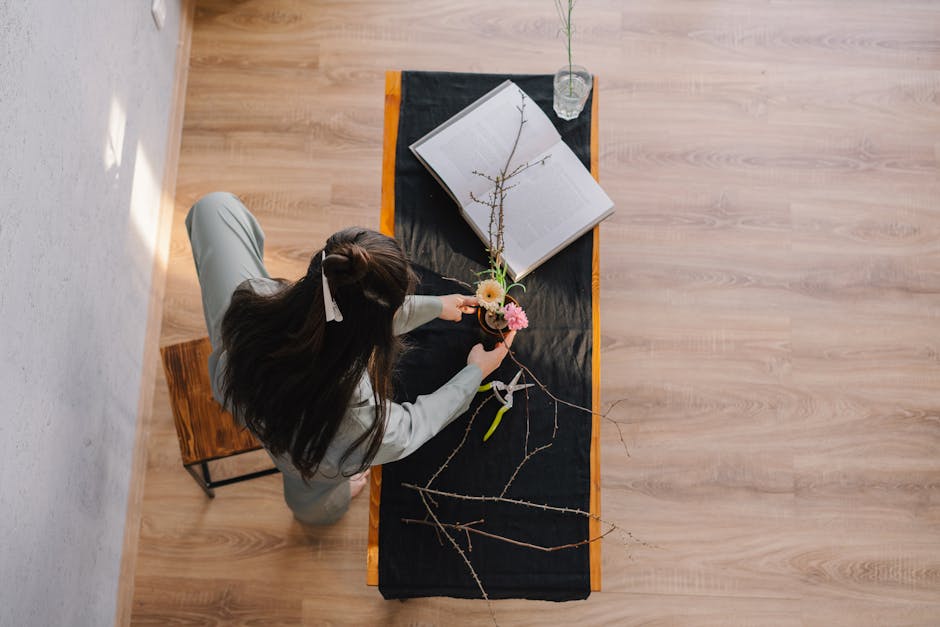Designing the Ideal Modern Minimalist Workspace That Fosters Creativity and Calm
Introduction
In today’s fast-paced world, the workspace is more than just a location; it’s a sanctuary for productivity, creativity, and mental well-being. A modern minimalist workspace, meticulously designed, can significantly impact your focus and overall performance. This article explores how to create such a space, balancing simplicity and functionality to cultivate both calm and creative energy.
Creating Your Minimalist Workspace: Key Elements
Declutter and Simplify
The cornerstone of minimalism is decluttering. Before you begin designing, remove everything unnecessary from your existing workspace. This includes papers, unused supplies, and distracting decorations.
- The Marie Kondo Method: Ask yourself if each item “sparks joy.” If not, consider donating or discarding it responsibly.
- Digital Decluttering: Organize your digital files, delete unnecessary programs, and unsubscribe from unwanted emails.
- Surface Simplicity: Keep your desk surface as clear as possible. Utilize storage solutions to keep essential items within easy reach but out of sight.
Choosing the Right Furniture
Minimalist furniture prioritizes functionality and clean lines. Opt for pieces that serve multiple purposes and avoid bulky, ornate designs.
- Ergonomic Chair: Invest in a high-quality ergonomic chair to support proper posture and prevent discomfort during long work sessions.
- Standing Desk Converter: Consider a standing desk converter or a fully adjustable standing desk to promote movement and improve energy levels.
- Storage Solutions: Choose storage units with clean, simple designs. Think floating shelves, drawer organizers, and minimalist cabinets.
Optimizing Lighting and Color
Lighting and color significantly impact mood and productivity. Prioritize natural light and a calming color palette.
- Maximize Natural Light: Position your desk near a window to benefit from natural daylight.
- Artificial Lighting: Supplement natural light with adjustable task lighting that reduces eye strain. Consider using daylight bulbs.
- Neutral Color Palette: Opt for a neutral color palette such as white, gray, beige, or pastel shades. These colors promote calmness and focus. Introduce pops of color through plants or artwork.
Incorporating Biophilic Design
Biophilic design involves incorporating natural elements into the workspace to reduce stress and improve well-being.
- Plants: Introduce indoor plants to purify the air and add a touch of nature. Choose low-maintenance varieties like snake plants, pothos, or succulents.
- Natural Materials: Use natural materials such as wood, stone, or bamboo in your furniture and accessories.
- Nature Views: If possible, arrange your workspace to offer a view of nature.
Managing Cables and Wires
Visible cables and wires can contribute to a cluttered and distracting environment. Implement strategies to manage and conceal them.
- Cable Management Systems: Use cable ties, sleeves, and trays to bundle and organize cables.
- Wireless Peripherals: Opt for wireless keyboards, mice, and headphones to minimize cable clutter.
- Conceal Power Strips: Use a cable box or desk grommets to conceal power strips and keep them out of sight.
Personalization with Purpose
While minimalism emphasizes simplicity, personal touches are essential to make your workspace feel inspiring. However, avoid excessive clutter.
- Meaningful Artwork: Choose a few pieces of artwork that inspire you and reflect your personal style.
- Inspirational Quotes: Display a small, framed quote that motivates you.
- Comfortable Accents: Add a soft throw blanket or a comfortable cushion to your chair for added comfort.
Conclusion
Designing the ideal modern minimalist workspace is an ongoing process of refinement. By focusing on decluttering, functional furniture, optimized lighting, biophilic design, and purposeful personalization, you can create a space that fosters creativity, calm, and enhanced productivity. Remember that the goal is to create an environment that supports your work and well-being, allowing you to thrive in your daily tasks.




Post Comment